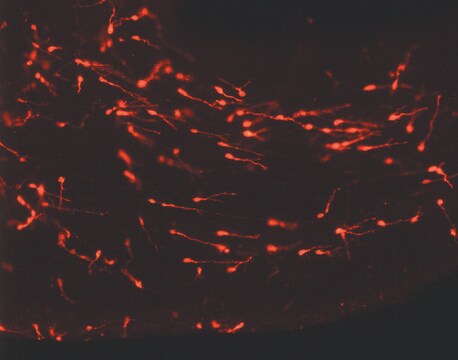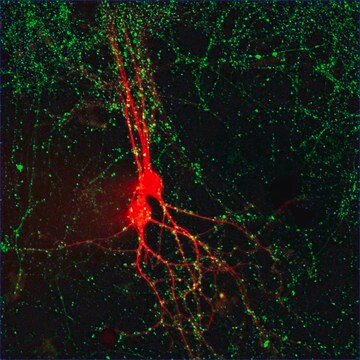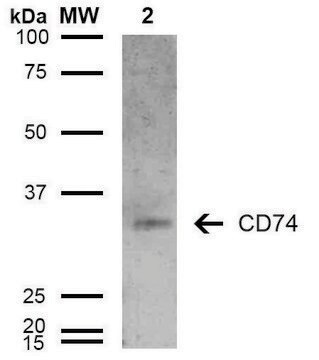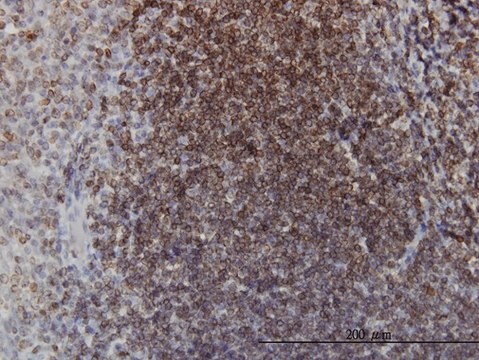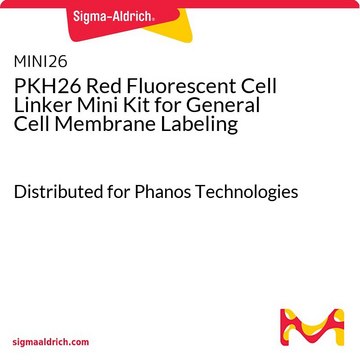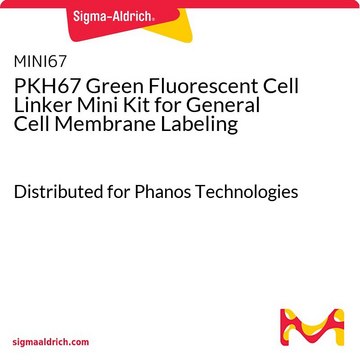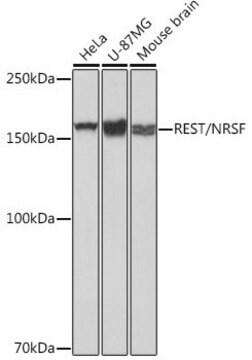추천 제품
생물학적 소스
rabbit
Quality Level
결합
unconjugated
항체 형태
affinity isolated antibody
항체 생산 유형
primary antibodies
클론
polyclonal
제품 라인
Prestige Antibodies® Powered by Atlas Antibodies
양식
buffered aqueous glycerol solution
종 반응성
human
기술
immunohistochemistry: 1:20- 1:50
UniProt 수납 번호
배송 상태
wet ice
저장 온도
−20°C
타겟 번역 후 변형
unmodified
유전자 정보
human ... EPHB3(2049)
면역원
Ephrin type-B receptor 3 precursor recombinant protein epitope signature tag (PrEST)
Sequence
AHTRYTFEVQAVNGVSGKSPLPPRYAAVNITTNQAAPSEVPTLRLHSSSGSSLTLSWAPPERPNGVILDYEMKYFEKSEGIASTVTSQMNSVQLDGLRPDARYVVQVRARTVAGYGQYSRPAEFETTSE
Sequence
AHTRYTFEVQAVNGVSGKSPLPPRYAAVNITTNQAAPSEVPTLRLHSSSGSSLTLSWAPPERPNGVILDYEMKYFEKSEGIASTVTSQMNSVQLDGLRPDARYVVQVRARTVAGYGQYSRPAEFETTSE
애플리케이션
All Prestige Antibodies Powered by Atlas Antibodies are developed and validated by the Human Protein Atlas (HPA) project and as a result, are supported by the most extensive characterization in the industry.
The Human Protein Atlas project can be subdivided into three efforts: Human Tissue Atlas, Cancer Atlas, and Human Cell Atlas. The antibodies that have been generated in support of the Tissue and Cancer Atlas projects have been tested by immunohistochemistry against hundreds of normal and disease tissues and through the recent efforts of the Human Cell Atlas project, many have been characterized by immunofluorescence to map the human proteome not only at the tissue level but now at the subcellular level. These images and the collection of this vast data set can be viewed on the Human Protein Atlas (HPA) site by clicking on the Image Gallery link. We also provide Prestige Antibodies® protocols and other useful information.
The Human Protein Atlas project can be subdivided into three efforts: Human Tissue Atlas, Cancer Atlas, and Human Cell Atlas. The antibodies that have been generated in support of the Tissue and Cancer Atlas projects have been tested by immunohistochemistry against hundreds of normal and disease tissues and through the recent efforts of the Human Cell Atlas project, many have been characterized by immunofluorescence to map the human proteome not only at the tissue level but now at the subcellular level. These images and the collection of this vast data set can be viewed on the Human Protein Atlas (HPA) site by clicking on the Image Gallery link. We also provide Prestige Antibodies® protocols and other useful information.
생화학적/생리학적 작용
EPHB3 (Ephrin type-B receptor 3) gene encodes a Eph-related receptor tyrosine kinase that specifically binds to the transmembrane subgroup of Eph-receptor ligands (ephrin-B). It interacts with the PDZ domain of the ras-binding protein AF6 and regulates signal transduction. The ephrins (ligands) are involved in axon guidance and other patterning processes during vertebrate development. It mediates remodeling of neuronal circuitry involving the regrowth of adult retinal ganglion cell (RGC) axons and regulation of axonal plasticity after CNS injury.
특징 및 장점
Prestige Antibodies® are highly characterized and extensively validated antibodies with the added benefit of all available characterization data for each target being accessible via the Human Protein Atlas portal linked just below the product name at the top of this page. The uniqueness and low cross-reactivity of the Prestige Antibodies® to other proteins are due to a thorough selection of antigen regions, affinity purification, and stringent selection. Prestige antigen controls are available for every corresponding Prestige Antibody and can be found in the linkage section.
Every Prestige Antibody is tested in the following ways:
Every Prestige Antibody is tested in the following ways:
- IHC tissue array of 44 normal human tissues and 20 of the most common cancer type tissues.
- Protein array of 364 human recombinant protein fragments.
결합
Corresponding Antigen APREST71464
물리적 형태
Solution in phosphate-buffered saline, pH 7.2, containing 40% glycerol and 0.02% sodium azide
법적 정보
Prestige Antibodies is a registered trademark of Merck KGaA, Darmstadt, Germany
면책조항
Unless otherwise stated in our catalog or other company documentation accompanying the product(s), our products are intended for research use only and are not to be used for any other purpose, which includes but is not limited to, unauthorized commercial uses, in vitro diagnostic uses, ex vivo or in vivo therapeutic uses or any type of consumption or application to humans or animals.
적합한 제품을 찾을 수 없으신가요?
당사의 제품 선택기 도구.을(를) 시도해 보세요.
Storage Class Code
10 - Combustible liquids
WGK
WGK 1
Flash Point (°F)
Not applicable
Flash Point (°C)
Not applicable
개인 보호 장비
Eyeshields, Gloves, multi-purpose combination respirator cartridge (US)
가장 최신 버전 중 하나를 선택하세요:
A D Bergemann et al.
Oncogene, 16(4), 471-480 (1998-03-04)
The ephrins are a family of ligands that bind to Eph family receptor tyrosine kinases, and have been implicated in axon guidance and other patterning processes during vertebrate development. We describe here the identification and characterization of murine ephrin-B3. The
B Hock et al.
Proceedings of the National Academy of Sciences of the United States of America, 95(17), 9779-9784 (1998-08-26)
Eph-related receptor tyrosine kinases (RTKs) have been implicated in intercellular communication during embryonic development. To elucidate their signal transduction pathways, we applied the yeast two-hybrid system. We could demonstrate that the carboxyl termini of the Eph-related RTKs EphA7, EphB2, EphB3
Arthur Arcinas et al.
Journal of proteome research, 8(8), 3958-3968 (2009-06-18)
Cell surface proteins have been shown to be effective therapeutic targets. In addition, shed forms of these proteins and secreted proteins can serve as biomarkers for diseases, including cancer. Thus, identification of cell surface and secreted proteins has been a
Xiao Liu et al.
The Journal of neuroscience : the official journal of the Society for Neuroscience, 26(12), 3087-3101 (2006-03-24)
Endogenous mechanisms underlying the remodeling of neuronal circuitry after mammalian CNS injury or disease remain primarily unknown. Here, we investigated axonal plasticity after optic nerve injury and found that macrophages recruited into the injury site and adult retinal ganglion cell
Chary Marquez Batista et al.
Neural plasticity, 2014, 451639-451639 (2014-08-12)
Pigment epithelium derived factor (PEDF) exerts trophic actions to motoneurons and modulates nonneuronal restorative events, but its effects on neuroplasticity responses after spinal cord (SC) injury are unknown. Rats received a low thoracic SC photothrombotic ischemia and local injection of
자사의 과학자팀은 생명 과학, 재료 과학, 화학 합성, 크로마토그래피, 분석 및 기타 많은 영역을 포함한 모든 과학 분야에 경험이 있습니다..
고객지원팀으로 연락바랍니다.


